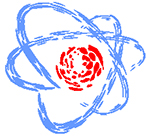Speaker
Ms
Marcela Jeličová
(Czech)
Description
Ionizing radiation changes the structure, function and synthesis of nucleic acids, especially DNA. After irradiation, biodosimetric markers, which are directly proportional to the absorbed dose, are expressed. In addition to their accessibility, sensitivity and reliability, they should provide data as quickly as possible, since time is a critical factor for successful treatment of accidentally irradiated individuals.
The aim of our study is to design, evaluate, and compare different biodosimetric methods. Based on their efficiency, the biodosimetric markers could be eventually introduced for practical usage in the Army of the Czech Republic.
Peripheral blood lymphocytes and their subpopulations are attractive targets for retrospective determination of received dose. They are very susceptible to ionizing radiation and it is quite easy to collect them from irradiated individuals.
As a rapid tool for estimation of irradiation-associated body damage, we chose the following workflow, including flow-cytometry to determinate absolute count changes and analysis of relative proportions of lymphocyte subpopulations and detection of phosphorylated histone γH2AX. In order to estimate the obtained dose, it is advisable to apply complementary methods such as standard biodosimetric methods, especially micronucleus or dicentric assay. Electrochemical detection of DNA damage could potentially become a new biodosimetric tool. This method monitors electron transfer of redox compounds, which bind to DNA molecules attached to electrode surface, producing characteristic current signals related to the structure of detected complex. The mutual collaboration of researchers with different experimental approaches in the department of Radiobiology (Faculty of Military Health Sciences, University of Defence) brings new results and interesting insights into the field of basic biodosimetric research.
Summary
Keywords: Ionizing radiation, DNA damage, biodosimetry, methods, radiation biology
Author
Ms
Marcela Jeličová
(Czech)

